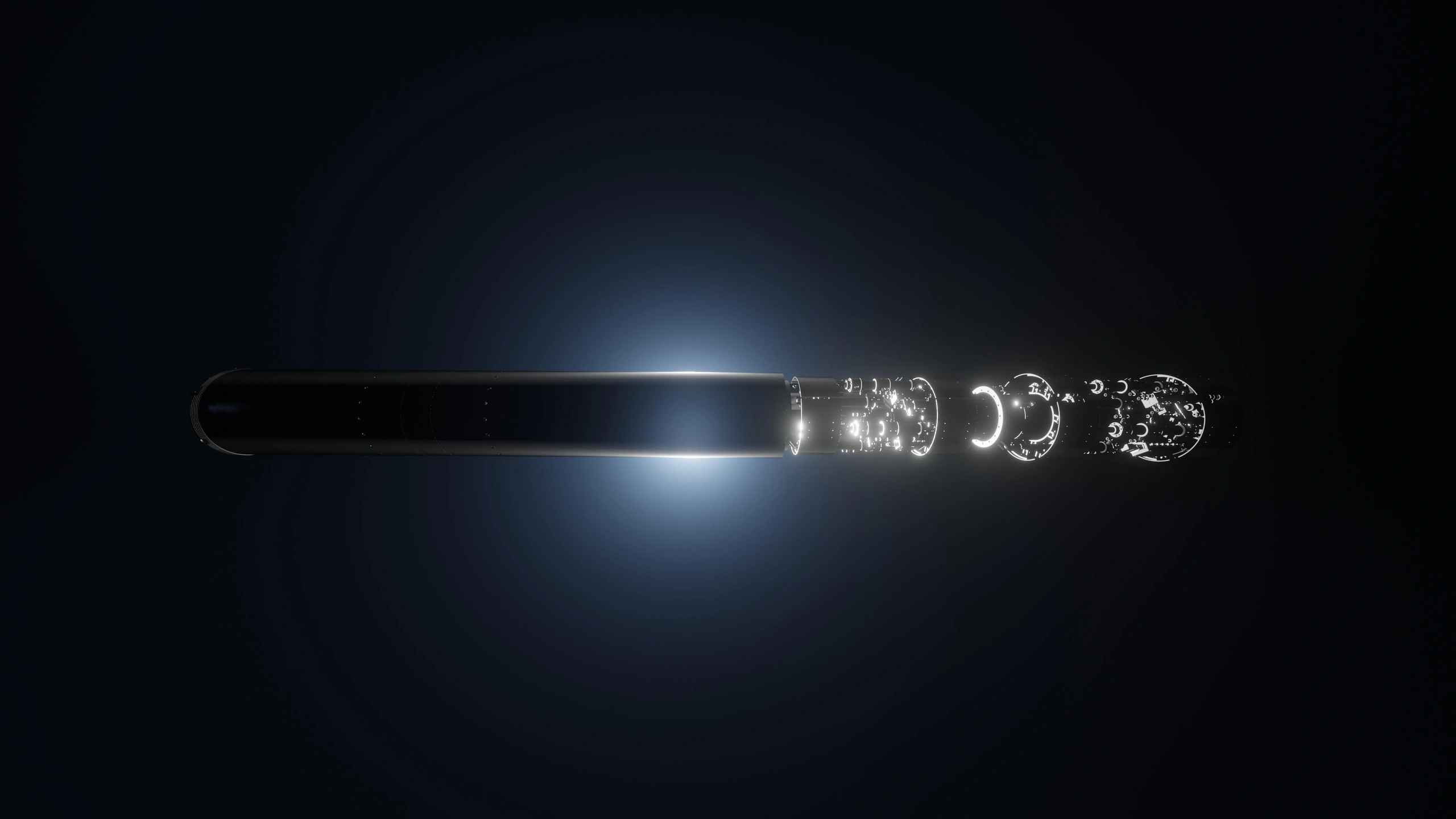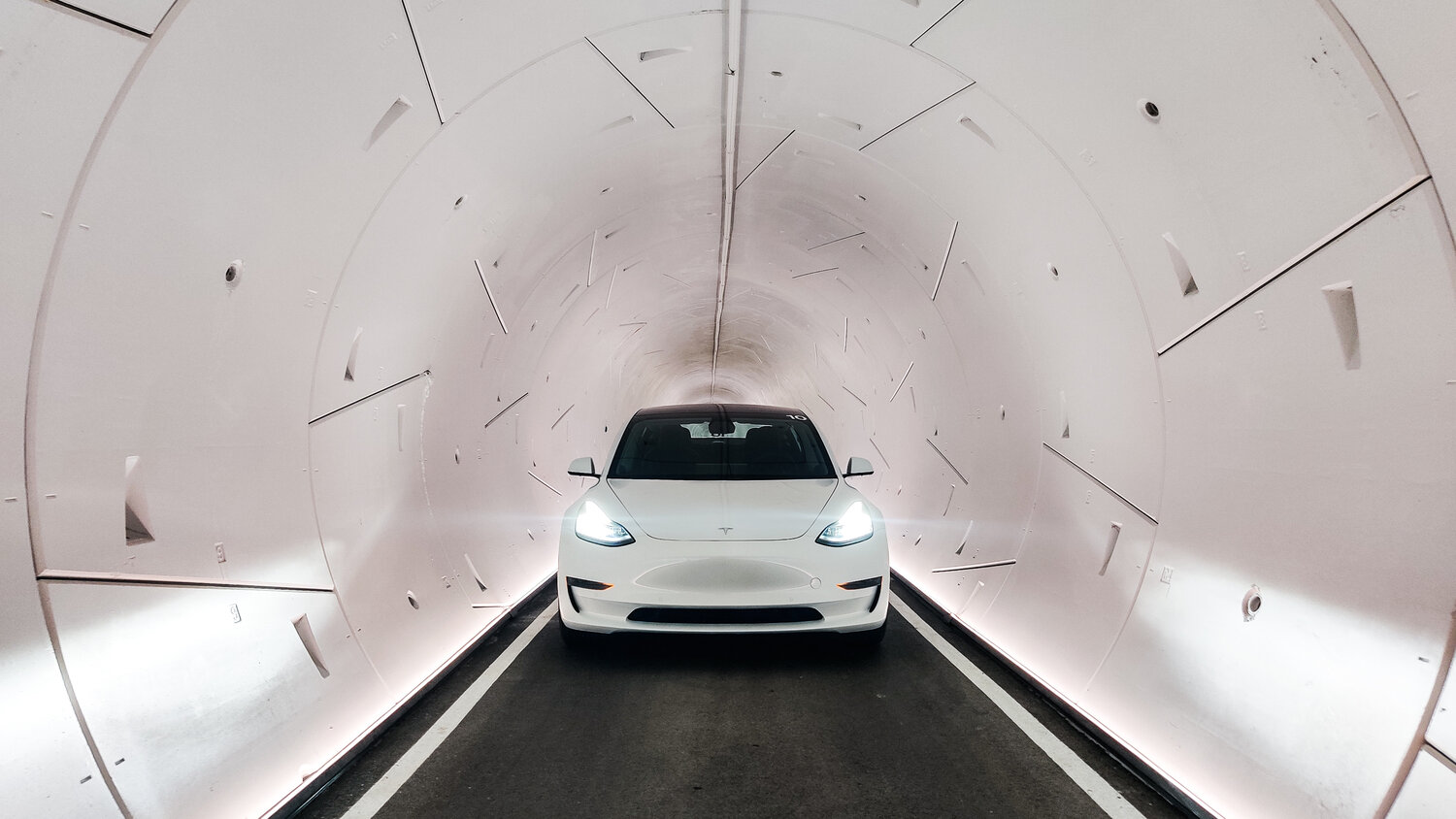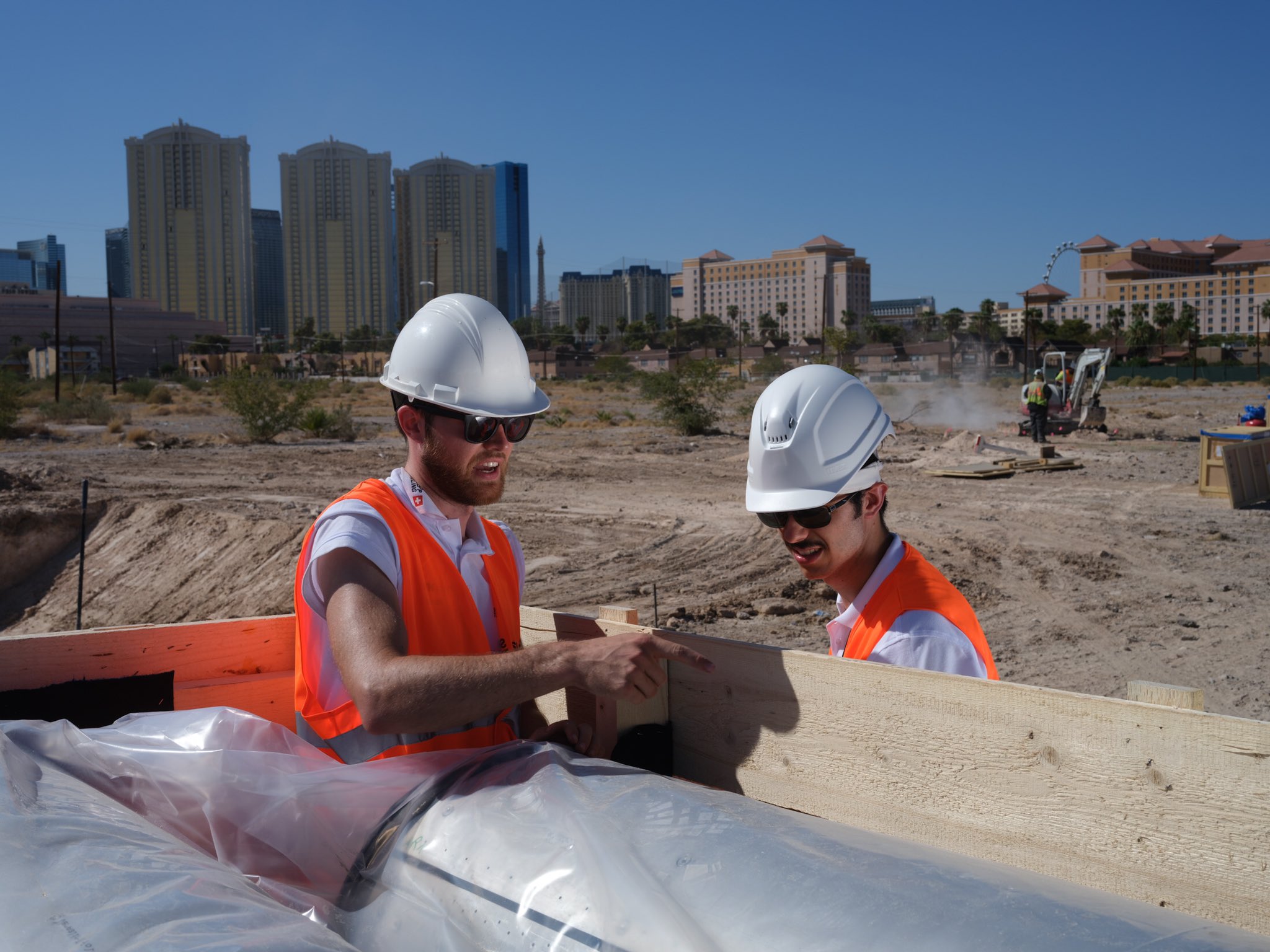Students from the Swiss Federal Institute of Technology (ETH) in Zurich won second place at the first Not-A-Boring Competition, a tunnel construction race designed by Elon Musk’s The Boring Company that challenges teams to bore a 30-meter stable tunnel with a diameter of 50 centimeters in the Nevada desert just outside of Las Vegas, aiming to improve the speed of tunnel boring machines (TBMs). The runners-up, known as Swissloop Tunneling, developed an innovative tunneling robot that bored through solid rock while simultaneously fabricating a supportive 3D printed tunnel lining on site.

The Swissloop Tunneling’s Groundhog Alpha 3D printing tunneling robot. Image courtesy of Swissloop Tunneling/Janick Entremont.
Groundhog Alpha, the seven-meter, 2.5-ton tunnel boring machine developed by Swissloop Tunneling, dug a tunnel more than 18 meters long by using tough glass fiber materials and a two-component polymer mix to create a 15mm (0.59 inch) thick and highly reliable tunnel wall (which hardens immediately) for two hydraulic grippers to alternately press against the newly created tunnel tube o propel the tunneling machine forward continuously while ensuring the structural integrity along the whole length of the tunnel. The machine’s original 3D printing mechanism also won the team the “Innovation and Design Award.”
Last year, the Swissloop Tunneling team designed and built Groundhog Alpha – named after one of nature’s most creative tunnel-building animals. With its unique steering mechanism and progressive tunnel lining system, the robot’s capability to 3D-print the tunnel tube while continuously moving forward is something that has never been done before.
Swissloop Tunneling Founder and Co-President Stefan Kaspar said: “The award validates our approach of taking the sometimes difficult but purposely innovative path.” In the future, the team wants to further develop the technology in such a way that the machine can dig tunnels with a four-meter diameter – the width of the tunnels in the Hyperloop concept, a proposed futuristic mode of transportation, consisting of a sleek pod-like capsule which is levitating inside vacuum tubes.
Based on a concept developed by Musk, the idea behind the Hyperloop project is to transport people and goods over shorter distances through tunnels under or above the earth’s surface to their destination at high speed. To make tunneling financially viable, the drilling robots required must be as fast, compact, and automated as possible, which is why the conditions set by the SpaceX founder for the high-tech scientific race in Las Vegas are challenging.
Musk hosted four SpaceX Hyperloop Competitions, where students from all over the world constructed pod capsules to transport people and goods. At the end of 2019’s Hyperloop Competition, Musk announced that The Boring Company would hold a tunneling competition in the future. By summer 2020, the official announcement was made, and Swissloop Tunneling was founded at ETH Zurich.

The Boring Company’s Vegas Loop, a hyperloop 15-mile dual tunnel system that will run underneath portions of Las Vegas. Image courtesy of The Boring Company.
Today, the student initiative brings together over 40 students with expertise in mechanical, electrical, civil engineering, and various business-related fields. The team members from ETH Zurich and other Swiss universities are set on revolutionizing the tunneling industry and researching infrastructure for the Hyperloop concept.
Out of nearly 400 applicants, twelve teams advanced through the technical design reviews to compete in Las Vegas, where Swissloop Tunneling finally went against the winning team from the Technical University Of Munich (TUM), in Germany, for the main prize. As part of the so-called “digging dozen,” they traveled with the Groundhog Alpha to Las Vegas for the six-day-long competition.

The Swissloop Tunneling team working at the competition site in Las Vegas to prepare the Groundhog Alpha machine. Image courtesy of Swissloop Tunneling/Janick Entremont.
During the first day, the team became acquainted with the site and visited the Boring Company’s Vegas Loop for inspiration. The planned 15-mile dual tunnel system will run underneath portions of the Las Vegas Strip and downtown Las Vegas, connecting resorts and other places of interest along the way and providing one of the fastest and convenient modes of transportation for the Las Vegas community. For example, visitors will travel from McCarran Airport to the Las Vegas Convention Center in five minutes for $10.
Back at the competition site, once the Groundhog Alpha was unpacked, the team set up the operations station and started working on the tunnel boring machine. After three days of running through several checks, including erosion, navigation, and soil removal, the group was ready for some actual tunnel boring activity.
But tunneling in the desert wasn’t boring at all. Aside from the 40 degree Celsius weather, during the fifth day of the competition, the finalists were surprised by a sandstorm and a heavy thunderstorm with lightning bolts striking the competition site. As a result, the work was interrupted, and the whole site was evacuated. However, on Saturday, after working through the night, Swissloop Tunneling was one of just two teams to be cleared to enter the final round on Sunday, September 12.

The Swissloop Tunneling team performing checks on their Groundhog Alpha machine. Image courtesy of Swissloop Tunneling/Janick Entremont.
With just two teams left, the competition was fierce. Competitors were required to drill a tunnel measuring 30 meters in length and 50 centimeters in diameter in around three hours with the TBMs they had built themselves. TUM Boring’s TBM drilled a 22-meter-long tunnel, while Swissloop Tunneling managed to dig a tunnel more than 18 meters long. As a benchmark, the Boring Company is looking for a tunnel boring machine that works faster than a snail’s pace, challenging teams to come up with tunneling solutions and answer the question, “Can you beat the snail?”
In fact, snails played a key role in developing Musk’s Hyperloop concept since they are currently faster than tunnel boring machines. At a TED Talk a few years back, Musk explained that the snail moves 14 times faster than a tunnel-digging machine, so his plan was to improve the speed of the machines to surpass a snail’s speed, ultimately aiming to reduce costs and improve the economics behind tunnel construction.
Subscribe to Our Email Newsletter
Stay up-to-date on all the latest news from the 3D printing industry and receive information and offers from third party vendors.
Print Services
Upload your 3D Models and get them printed quickly and efficiently.
You May Also Like
3D Printing News Briefs, June 11, 2025: Sustainability, Automotive Tooling, & More
We’re starting with sustainability news in today’s 3D Printing News Briefs, as EOS has strengthened its commitment on climate responsibility, and Zestep is making 3D printing filament out of eyewear...
3D Printing 50 Polymer Stand-In Parts for Tokamaks at the PPPL & Elytt Energy
Of all the world’s things, a tokamak is one of the hardest, most complex, expensive and exacting ones to make. These fusion energy devices make plasma, and use magnets to...
3D Printing News Briefs, May 17, 2025: Color-Changing Materials, Humanoid Robot, & More
We’re covering research innovations in today’s 3D Printing News Briefs! First, Penn Engineering developed 3D printed materials that change color under stress, and UC Berkeley researchers created an open source,...
Firehawk Aerospace Partners with JuggerBot 3D, Gets $1.25M from AFWERX for 3D Printed Propellants
Texas-based Firehawk Aerospace, an advanced energetic materials firm that works with aerospace and defense applications, announced a strategic partnership with JuggerBot 3D, an Ohio-based large-format 3D printer manufacturer. Together, the...

































